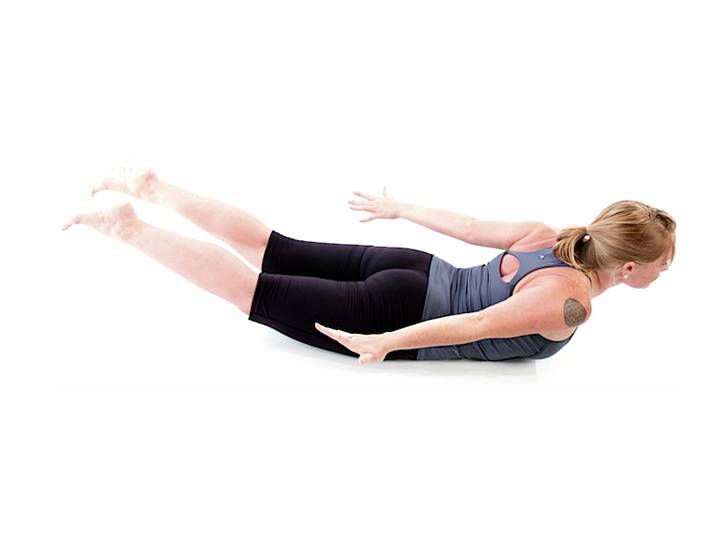When you think of yoga, you probably think of exercise, relaxation, and stress relief. These are all good reasons to practice yoga, but there’s another benefit. Yoga can also do wonders for your immune system.
So, how does yoga help, and what techniques can you use to bring balance to your system? Let’s talk about the science behind your immune health, and seven powerful yoga poses for boosting your immunity.
Yoga Reduces Stress
When you’re under stress, the effects aren’t restricted to your mental health. Your physical health also suffers. To date, there are more than 300 peer-reviewed studies that show that prolonged stress reduces your immunity.
When this happens, your body isn’t able to fight off viruses and bacteria the way it normally can. If you’re constantly getting sick, it could be because of stress! Yoga reduces stress systemically, limiting its impact on your immune health.
Yoga Reduces Inflammation
According to a study in the Journal of Behavioral Medicine, yoga reduces inflammation. In the study, researchers performed 15 separate trials with an average sample size of 70 people. Participants suffered from chronic inflammation and practiced Hatha yoga, which focuses primarily on poses.
The Study
The researchers looked for compounds called cytokines, which trigger inflammation in the body. They also looked for C-reactive protein and antibodies, both of which indicate that there is inflammation. Participants who practiced yoga saw all of those markers go down. In one trial, scientists even found changes at the genomic level. Proteins in the cells that are critical for producing cytokines went down, literally reducing the body’s ability to create inflammation.
How Long Does Yoga Take to Work?
One thing the studies weren’t clear on was how long it takes to achieve anti-inflammatory effects. The studies were all over the map, lasting anywhere from eight to twelve weeks, with participants practicing yoga between once a week and once a day. The length of the sessions were even different – ranging from 30 to 90 minutes. But if you make yoga a regular habit, you’re bound to see some benefits.
Yoga is Exercise – And Exercise is Good for Immunity
Yoga isn’t just about mindfulness and relaxation. Depending on the intensity of your routine, it can also be a form of moderate exercise. And moderate exercise has been shown to reduce the risk of illness.* That’s because it stimulates all your body’s systems, including the immune system and nervous system.
Other Benefits of Exercise
According to the CDC, exercise has the following short- and long-term benefits:
- Improved sleep
- Reduced anxiety
- Lower blood pressure
- Reduced risk of stroke or heart attack
- Better bone health
- Weight loss
- Reduced risk of some kinds of cancer
- Improved coordination
- Reduced risk of nervous system disorders like depression and dementia
Once again, this only works if you’re exercising on a consistent basis. If you’re having trouble sticking to your yoga routine, a wellness app might help.
Other Ways to Boost Your Immunity
Your immune system is important. It’s what keeps you from getting sick! So when it comes to boosting your immune function, it’s best to take a multi-pronged approach. Here are some other ways to kick your immune system into high gear:
- Get plenty of sleep
- Avoid processed foods
- Hydrate regularly
- Exercise daily
- Limit your alcohol intake
- Practice grounding
Six Immune-Boosting Yoga Poses: Now that we know why yoga is good for your immune health, let’s talk about some specific techniques you can try. Here are six yoga poses – and one breathing technique – to boost immunity this cold and flu season.
Tree Pose (Vrikshasana)
To perform the tree pose, stand on one leg, and lift the other leg to the lotus position, with your hands clasped above your head. Focus your eyes forwards, and hold the position for a few seconds. Return your raised leg to the ground, and repeat the process with the other leg. Do this as many times as you like.
The tree pose is designed to bring a sense of balance. As you balance your body, you also balance your mind. It’s designed to strengthen your legs, feet, and ankles, as well as loosen your hips. It’s great for focus, as well as for general well-being. It’s also relatively easy, although you should avoid it if you have vertigo.
Cobra Pose (Bhujangasana)
To perform the cobra pose, lie flat on your stomach, with your elbows out and your hands palm-down next to your chest like you’re about to do a pushup. Lift your head, neck and shoulders, but keep your chest on the floor as you inhale a full breath. Then do a half pushup, keeping your thighs on the ground and arching your back as much as possible. Hold the position for five seconds, then slowly lay back down.
This pose strengthens and stretches the muscles in your back, buttocks, chest, core, and shoulders. It also improves blood circulation and increases your lung capacity. Many people use this yoga pose because they have asthma, but you shouldn’t try it in the middle of an attack. Wait till you feel better and do it then.
Seated Forward Bend (Paschimottanasana)
The seated forward bend starts in the dandasana, which is a basic staff pose. This is one of the standard starting yoga poses, where you sit with your legs outstretched and your back straight. Put a strap around your feet, then stretch out and grab them with your hands. Your knees should be slightly bent. Now inhale, and stretch your arms to the side. Then stretch for the sky and keep your back straight.
Exhale, and fold your whole body forward at the hips. Grab your feet, and bring your face close to your knees. Continue breathing, and try to lean further in as you exhale.
The seated forward bend is helpful for high blood pressure, diabetes, and general stress. It stretches the upper body and trunk, and can even alleviate anxiety.
Downward-Facing Dog (Adho Mukha Svanasana)
If you practice yoga, you’ll already be familiar with downward-facing dog. This is the yoga pose many people return to when they need to regain a feeling of calm. With your head down, you get a quick rush of blood and energy which can help you focus your mind.
This pose stretches your hamstrings, and provides a near-instant mood boost. Not only that, but it can help clear your sinuses. If you’re feeling congested, it’s a great way to get some relief.
Legs Up the Wall (Viparita Karani)
Legs up the wall is exactly what it sounds like. Facing your wall, sit down on the floor. Then lay on your side, and roll onto your back while lifting your legs up against the wall. Keep your feet hip-width apart, and slowly scoot your butt toward the wall. It doesn’t have to touch, but it should get as close as possible.
Now lay your alms flat with your palms facing upwards. Then relax all your muscles. Close your eyes and focus on your breathing, and lie there for at least 10 minutes.
This pose is helpful for everything from general anxiety to examination stress. It also makes good meditation practice.
Alternate Nostril Breathing (Anulom Vilom Pranayama)
Start by sitting cross-legged, as you often do in yoga practice. Put your hands on your knees, and close your eyes. Put your right thumb over your right nostril, and take a deep breath through your left nostril for a count of four. Put your left thumb over your left nostril, and hold both nostrils shut for a count of two. Then reverse the process and breathe through your right nostril, re-block the left, and so on. Do this for five minutes.
Alternate nostril breathing boosts your cardiovascular health as well as your immune system. It also helps reduce your stress hormones.
Final Thoughts
As you can see, consistent yoga practice is a great way to keep your immune system healthy. You just have to be consistent, whether that means working with a trained yoga teacher or doing your favorite yoga poses at home. The health benefits are undeniable!



